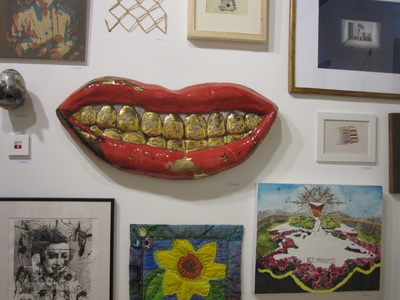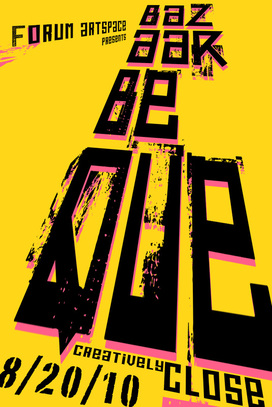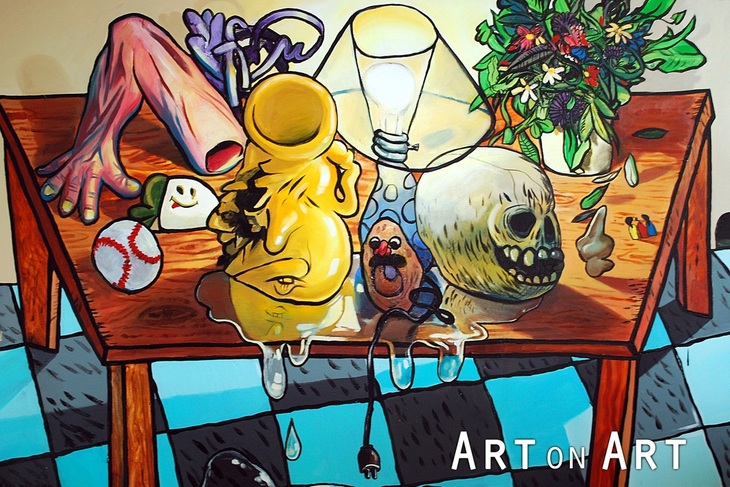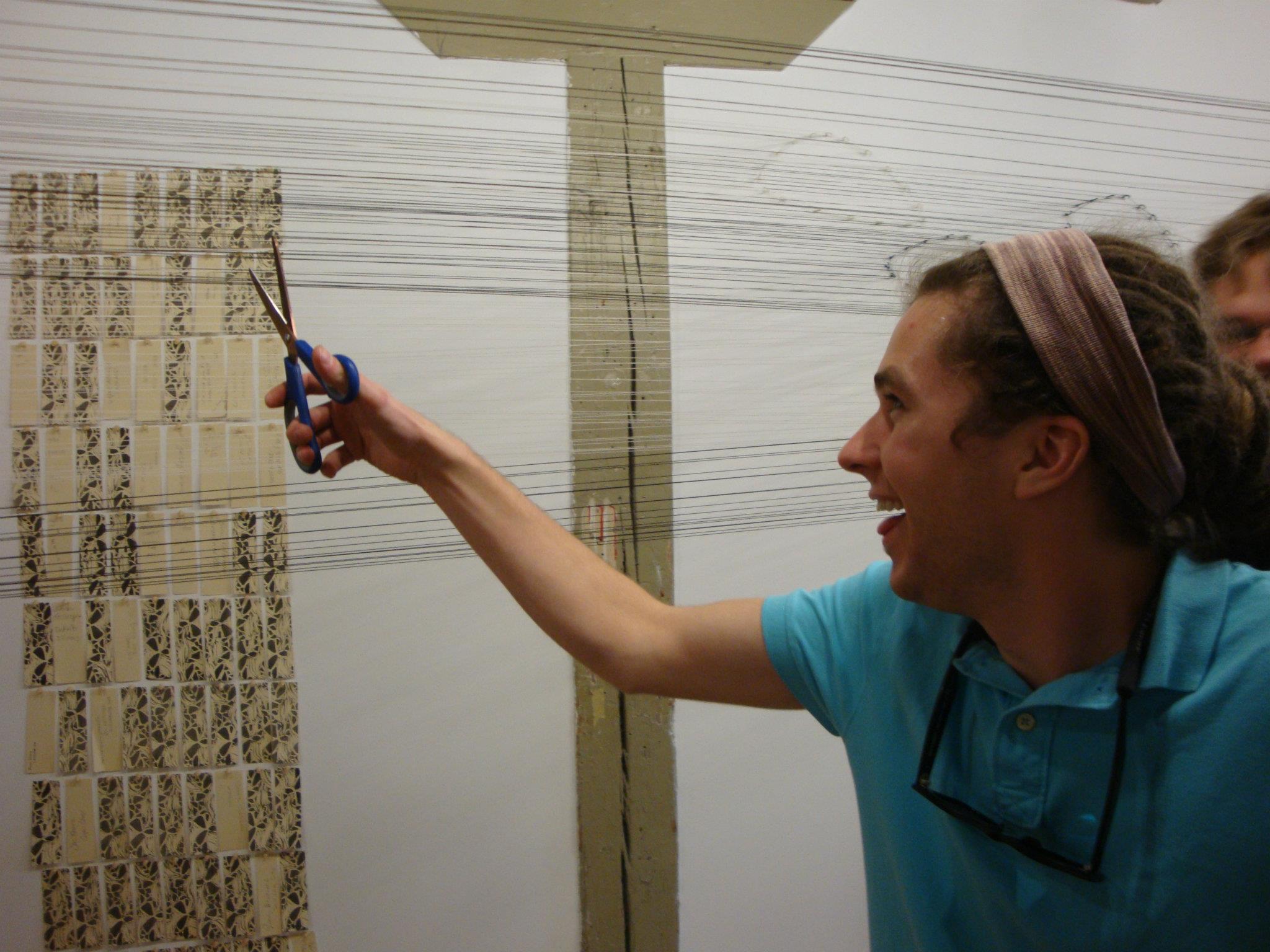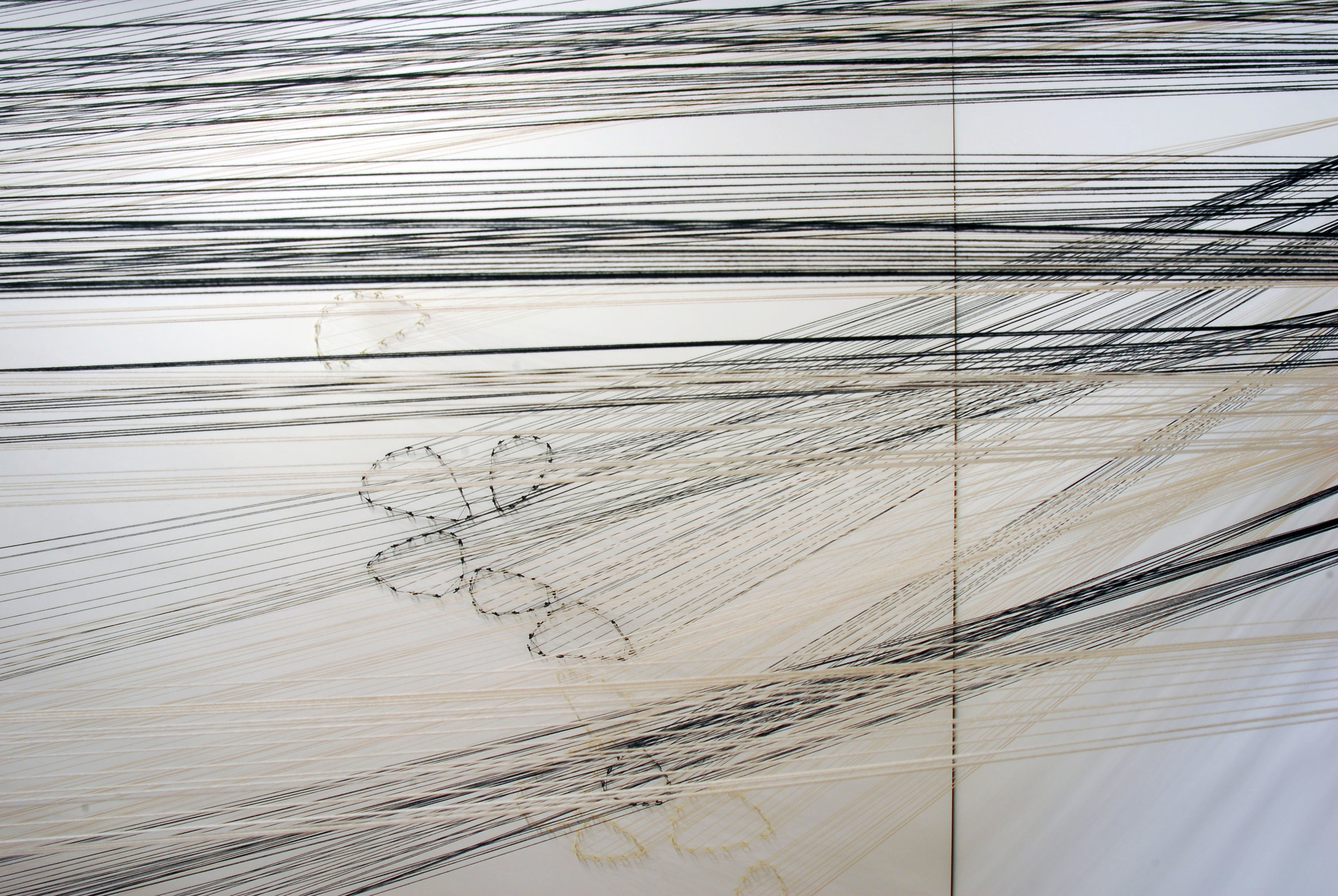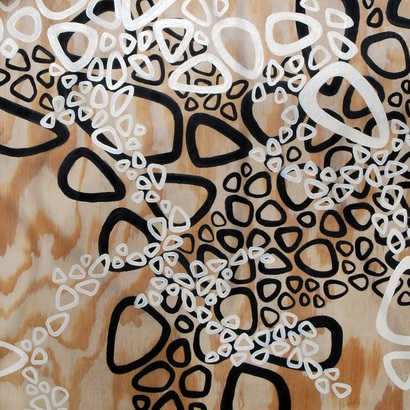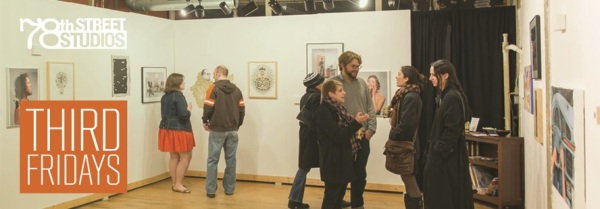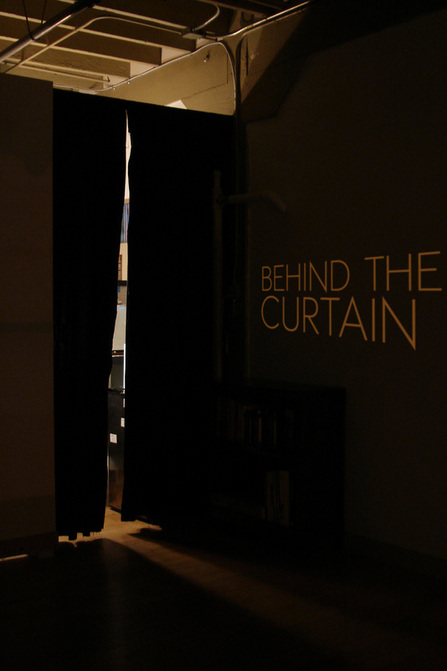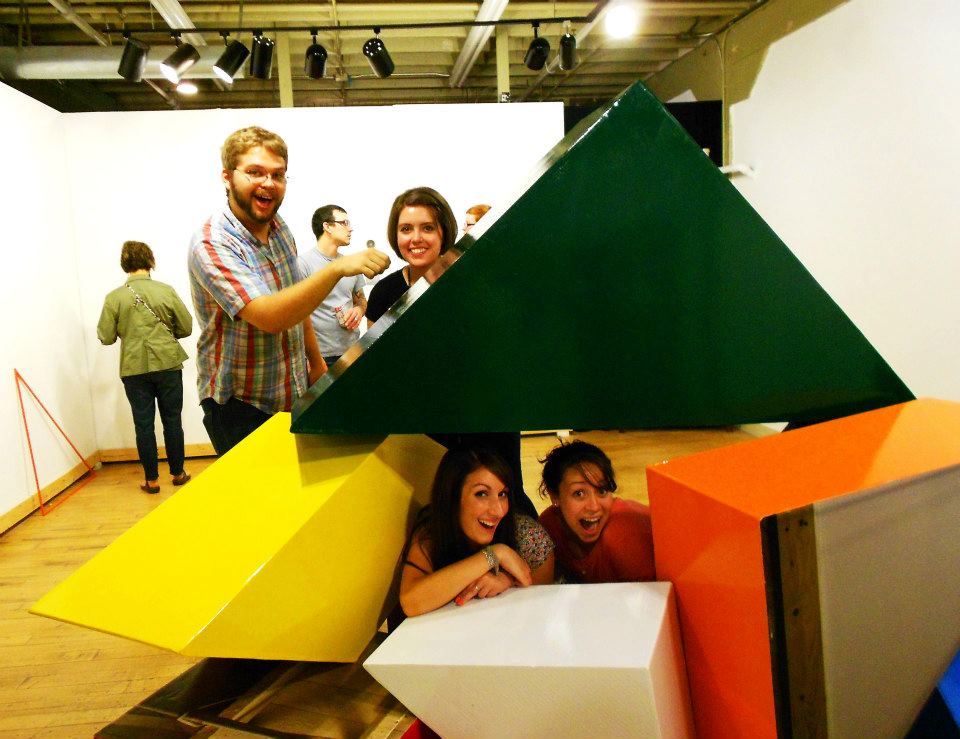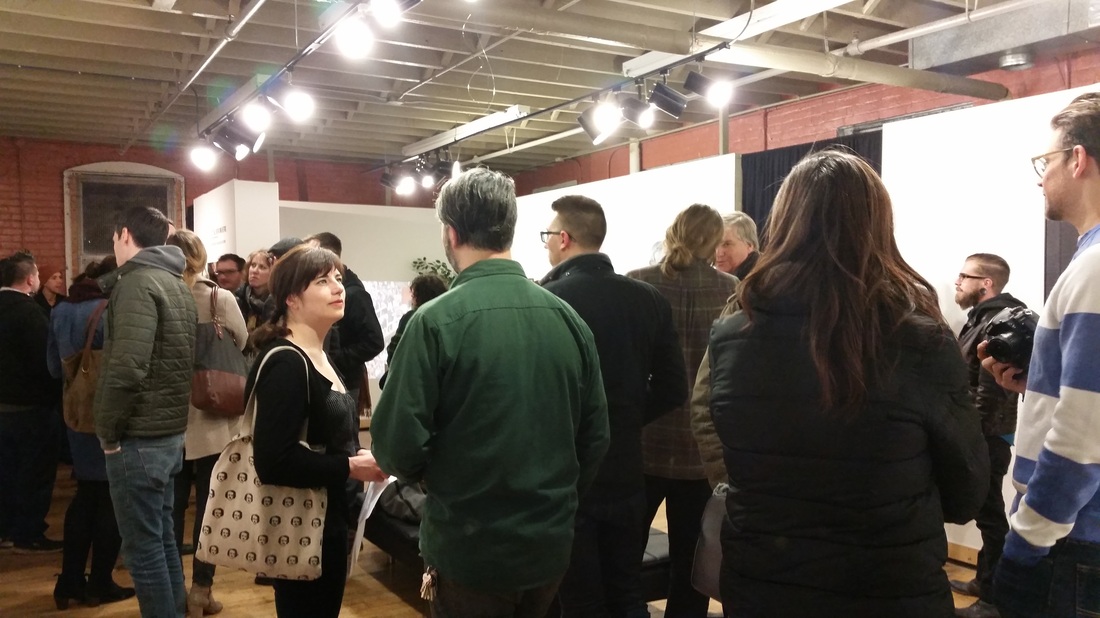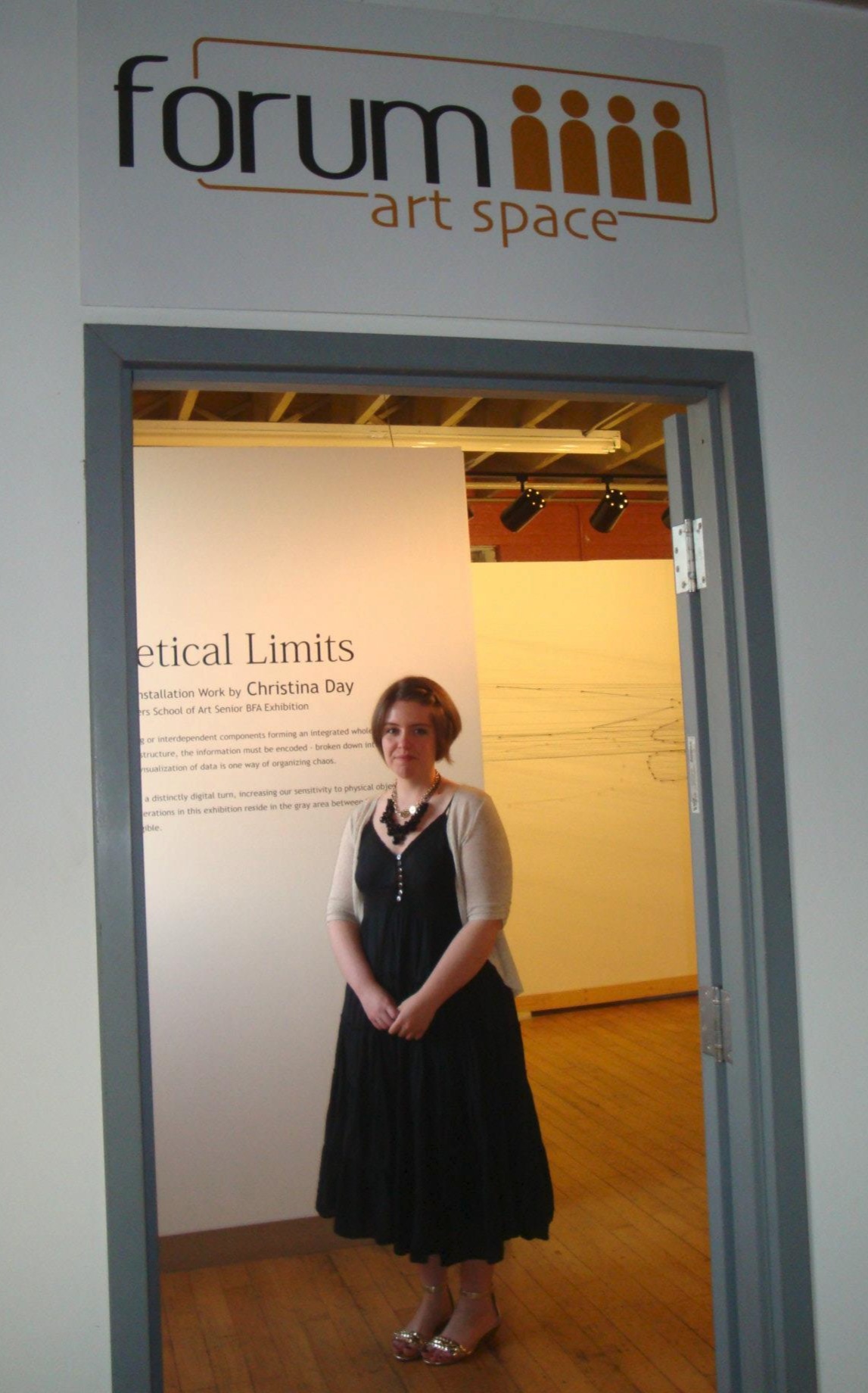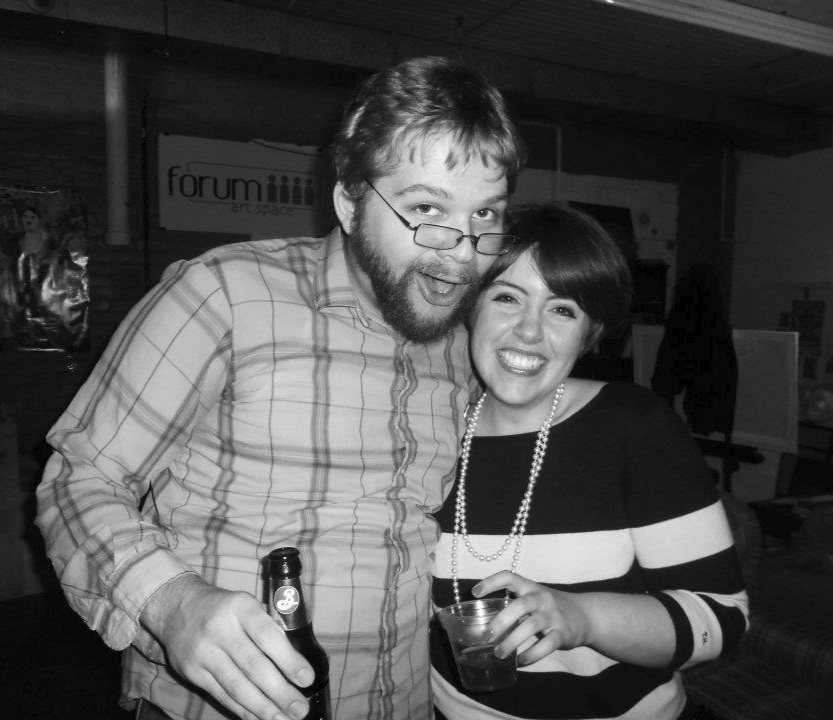10 Lessons from Running A Gallery
Tomorrow, FORUM artspace in Cleveland celebrates 9 years(!) with the closing of its final show. I was one of the artists in their first show Art on Art, and then joined the team for years 2-5. I learned so much and made some friends for life.
Sarah Kabot carved our names into our wall for Re:Installation FORUM, Bazaarbeque Vol. 9 got a swanky upgrade from new neighbors, Picture from Richard Peterson’s It Was Nice. Wasn’t It a Steal!, pictures of Bazaarbeque and Dan, Mike, and Stacey at an Exquisite Corpse event, and Mike and Karl installing drywall.
I thought I would take this opportunity to reflect on my time with FORUM, and share what I learned with you.
1. Create art to be shown.
I had exactly zero experience with drywall or even a familiarity with how walls were constructed before my time with FORUM. Lots of art is experimental, and the last thing on an artist’s mind is ensuring their work is “hang ready.” We developed some remarkably creative solutions to display work that was created either without a thought to how it would be displayed, or with thoughts that didn’t pan out as planned. Now, I’m so conscious when I’m making a thing about how it will ultimately be presented. Every museum and gallery I’m in, I look at how the work is hung and lit.
2. All art is speaks to someone.
Every summer we hosted Bazaarbeque, a group show that was loosely juried in the sense that pretty much all 4 of us had to dislike something or we had to run out of wall space for it to not be included. Which meant that every year, out of 60-80 pieces, there were at least 3 pieces that I really, absolutely, could not understand why we hung. And every summer, without fail, at least one of those pieces would sell.
Pictures from Art on Art, and show cards from #pix #elate, our 2011 show where we hung QR codes mounted on plexi that linked to works hosted on Facebook, Bazaarbeque Vol. 1, and Art on Art.
3. Have regular openings.
78th Street Studios went from a venue that attracted a few hundred die hard art lovers and artists’ family members at quarterly openings to a huge monthly draw for art in Cleveland, with building-wide openings every Third Friday that draw thousands, as well as a variety of satellite events. I pushed for regular openings as soon as I joined. While it’s true that super fans will follow your erratic schedule and messaging, it’s hard to overstate how different attendance was at openings once we fell into a routine schedule.
4. Write statements that reward people for reading them.
Your show statement should be written in plain English that can be understood by art-types and the general population alike. Fortunately, it’s falling out of vogue to create statements that sound like they were created as some sort of language experiment, where the word you were looking for was swapped with a synonym drawn from a hat.
It should also say something, as in, inform your visitors of something they would not get by only looking at the artwork. If two people come into your show and only one reads the statement, if it was successful, at some point the person who read your statement should be repeating back something from it to the person who did not.
5. Everything is cheaper than school.
I learned at least as much in 4 years with with FORUM as I did in 5 years at art school for roughly 1/3 the cost. Anyone who’s not thinking about a career that explicitly requires academic credentials should seriously consider the real world alternatives that are possible with the time and money you are budgeting for school. Supplement your experience with some critical essays, and when you encounter a problem, visit your local library and investigate how others have solved it. What you spend time, money, and attention on is something you will care about, and when you care about something enough to take it seriously, you learn about it.
An album cover we created to get tickets to a pop music themed SPACES Benefit, Paul being real funny, an Installation view of cardboard shipping containers from Paul’s solo show Cultural Hegemony, showcard from You Are Here, an international infographic show about globalization, and my favorite piece, Paul Butler’s Where New York Was Born, Installation view and showcard from my solo show, Theoretical Limits, Dan and I in a banner ad for Third Fridays at 78th Street Studios.
6. Choose your partners wisely.
The stress and pressure of running a small business brings out “not my proudest moments” in everyone. It’s not just about spending a lot of time with someone, although that’s a large component. To work together effectively you also have to have similar expectations about what a reasonable amount of work is, about what success looks like, about when to push an issue and when to compromise, about how to solve problems and implement those solutions, and so long as everyone is trying their best, everyone involved must be willing to extend mercy to everyone else.
7. It's not about money.
This is what I mean when I say every partner needs to share a vision about what success looks like. I can’t tell you how many times the four of us would dive deep into a conversation about every conceivable creative way to make money in our space, only to come to the conclusion that we should probably just be a bar. The reason we didn’t just become a bar is because we wanted something else MORE than we wanted money. Figure out what is and is not important to you and make sure that remains your focus, even when bills are due.
8. Don't take yourself too seriously.
Early on, we had two separate types of meetings, “business” meetings, and “hangouts.” But soon we realized that our most productive meetings were the hangouts! It’s easier to work harder, for longer, when you’re having fun. The flip side is, if you don’t love doing it, you won’t keep doing it. So find that thing you love about what you’re doing and amplify it.
Show cards from Bazaarbeque Vol. 5, illustrated by the incomparable Justin Will, Behind the Curtain, and The Fortune of Books, and photos from Re:Installation FORUM, the packed house at It’s All Been Done Before, and our first sign.
9. Don’t believe your own press.
Other people writing about you is like intergalactic travel, it just takes time for word to get out, and in that time, things have changed. Listen to what others are saying about you only insomuch as it can help you spot weaknesses in your messaging. Never forget that you are your own press first, and make sure you are controlling your narrative.
10. Keep it clean.
The least fun, but also most important task of running any physical space: the walk through. Every single opening, no matter how up to the wire we were, an hour before opening I would go outside, and walk in like I was visiting my space. Every opening is a house party, and you want to be a gracious host.
The internet is a space, too. Any time you add to your website, you should do a full digital walk through. Click every link and see what happens. Visit every social profile you have and update/streamline them as often as possible. The mindset here is the same as the one you should have when writing your statement; and it’s basically the Golden Rule.
Me in the doorway at the closing of my solo show, Me and Karl backstage in front of the graffiti wall onto which I inscribed “Art is deliberately inflicting experience” the first time I visited the space, and thought I was quite profound, showcard for Into the Sunset, and photos from our 5 year anniversary.
It’s truly bittersweet to have arrived at this day, but I’m so proud of the work Mike and Karl and have put in since I left. It was an honor to be a part of this group for so long, and I look forward to future projects from all my boys :)
Be sure to drop everything and come out tomorrow night, 6-9pm, 1300 W 78th St. in Cleveland to watch FORUM artspace ride off into the sunset.






